Facebook Retargeting Minimum Audience Size
Retargeting is often described as the process of advertising to people who have already visited your website. While that's true, it oversimplifies what retargeting can do for your business.
The integration between Facebook's pixel and a company's website allows businesses to retarget prospective customers from their very first interaction with a brand, all the way to website checkout.
Your website visitors can be segmented by pages they've visited, time spent on a specific page, and almost any other behavior or action taken on their path to purchase.
With the ability to track user behavior at such a detailed level, retargeting strategies have evolved to become more sophisticated, making them even bigger revenue drivers for businesses.
- What is Facebook retargeting?
- Two ways to implement Facebook retargeting
- How to build a Facebook retargeting strategy that scales
- Making the most of your creative for retargeting
- Conclusion
What is Facebook retargeting and why does it matter?
Facebook retargeting allows you to reach prospective customers who have shown an interest in your business or product, based on their online activity. This can range from something as passive as a like on Facebook to actions with a high purchase intent like clicking Add to Cart on your website.
If you have website traffic and are not running retargeting ads of any kind, there's a good chance you're missing out on potential sales.
Whether you want to warm up your latest followers or remind past website browsers about the products they were interested in, retargeting can play a pivotal role in most marketing strategies.
Note: The Facebook pixel must be integrated into your website to take advantage of Facebook retargeting and custom audiences. If you're on Shopify, you can use Shopify Marketing to guide you through setting up your Facebook pixel.
1. It's the highest ROI advertising activity
Facebook ads targeted at those who have never heard of your business can be effective at driving brand awareness and traffic to your site, but they might not pay off in sales right away.
Getting sales from a "cold" audience is often expensive since it takes time to build trust with a customer.
Retargeting as a form of advertising can quickly pay off and produce a healthy ROI, since you're only reaching people who have already shown interest in your brand and are therefore more likely to convert.
2. You can target specific behaviors
If your business offers more than one product it can be difficult to predict what new customers will be interested in. Retargeting allows you to tap into user behavior and only show ads for relevant products that the potential customer is most likely to buy.
An example of this is the furniture company Article. Article sells a variety of items, ranging from rugs to couches to bed frames.

Understanding which of its products a website visitor is interested in requires knowing which pages and products a visitor viewed. By tapping into retargeting ads, Article can only show customers products that are relevant to their interests.
3. It improves your conversion rate
According to a recent study by Wolfgang Digital, the average conversion rate for ecommerce businesses they looked at in 2019 was 1.85%.
Since only a small percentage of website visitors will end up making a purchase on their first visit, retargeting can be used to help bring more people back to your website to complete a purchase.
Ads targeted at those who abandoned their cart or didn't complete checkout can help capture sales you would otherwise lose, increasing your overall conversion rate.
Two ways to implement your Facebook retargeting strategy
1. Using an autopilot service for Facebook retargeting
For small businesses, or those just getting started with retargeting, using an app to run your retargeting campaigns on autopilot is a popular choice. Autopilot apps like Shoelace, Socioh, and AdRoll make it simple to set up and run basic retargeting campaigns.
Without installing a third-party app, you can also run Facebook dynamic retargeting ads through your Shopify store with Shopify Marketing.

Shopify Marketing will pull product images, titles, descriptions, and prices from your store and put together retargeting ads to reach your store visitors on Facebook and Instagram. This is one of the easiest and lowest-cost ways to launch your first retargeting campaign.
Pros
If you aren't experienced with managing ads yourself on Facebook, retargeting apps take away a lot of the complexities in setting up a campaign.
The Shoelace app, for example, offers an easy-to-follow setup guide with a built-in strategy to help you lead customers from the consideration phase to making a purchase.
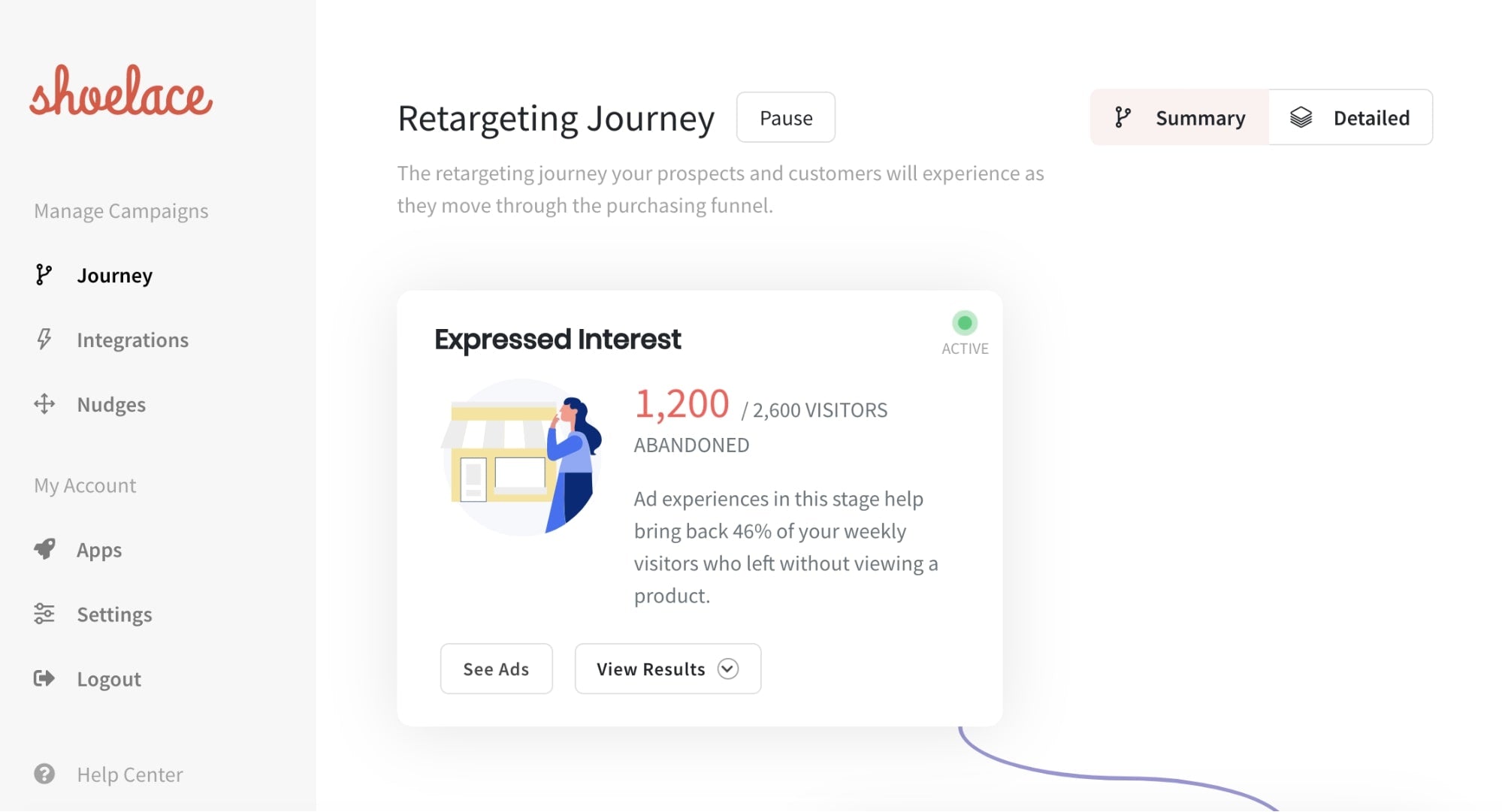
Cons
With the simple setup interface provided by an app, you may also give up the ability to dive deeper into the results of all your retargeting campaigns and scale your best performing ads.
If you are looking for a strategy to improve and scale your retargeting efforts, you will likely need to use the Facebook Ads Manager itself to gain full access to every tool available to you for retargeting.
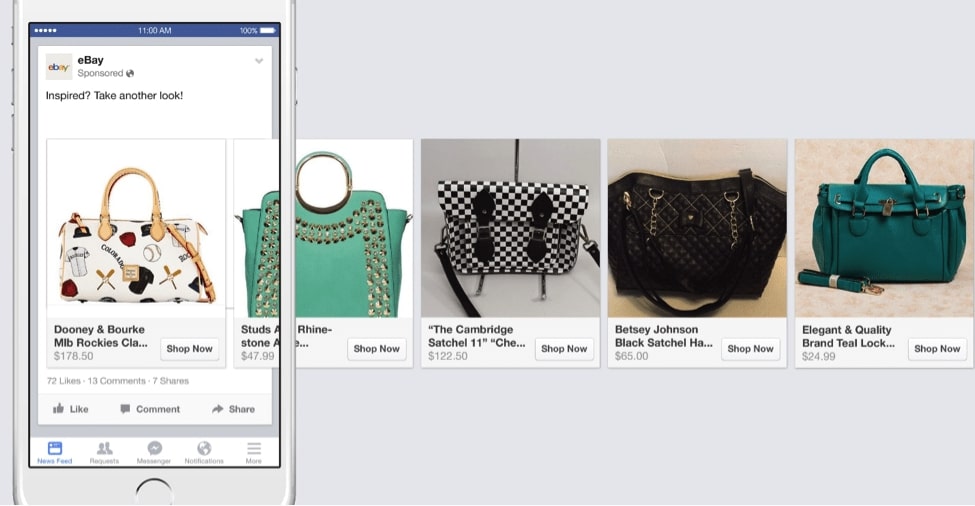
2. Managing your own Facebook advertising
Managing your own retargeting ads without a third-party app is available to any business through Facebook Ads Manager. By creating a Business Manager page and installing the Facebook pixel, you can set up, launch, and scale your own retargeting ads.
Pros
Ads Manager gives you access to every retargeting tool available to you on Facebook. This allows you to test as many different audiences and ad creative types as you want and analyze the full results of all your campaigns.
When advertising directly through Facebook there is also no additional fee outside of what you pay for your ads. On Facebook, you are only charged based on ad impressions, whereas apps or agencies include additional fees.
Cons
Many small business owners starting out with auto-pilot apps may feel nervous about switching over to managing their own retargeting campaigns. A lot of this fear comes from intimidation of Ads Manager.
Ads Manager is a more complicated tool than an app, but with the many guides and free courses available to entrepreneurs looking to learn, it has become easier for beginners to manage and scale their own campaigns.
How to build a retargeting strategy that scales
The goal of creating a retargeting strategy is to set up your campaigns in a way that allows you to scale your positive returns and convert more prospects into customers.
The best retargeting strategy requires focusing equal parts on targeting the right audiences and using the right creative. Once you have both elements working in tandem you can be assured that every potential customer is being served the right advertisement at the right moment.
1. Creating retargeting audiences
After adding your Facebook pixel to your Shopify store, you will be able to create "custom audiences" in the Audience section of the Facebook Ads Manager, which are made up of people who have engaged with you on social media or taken certain actions on your website.
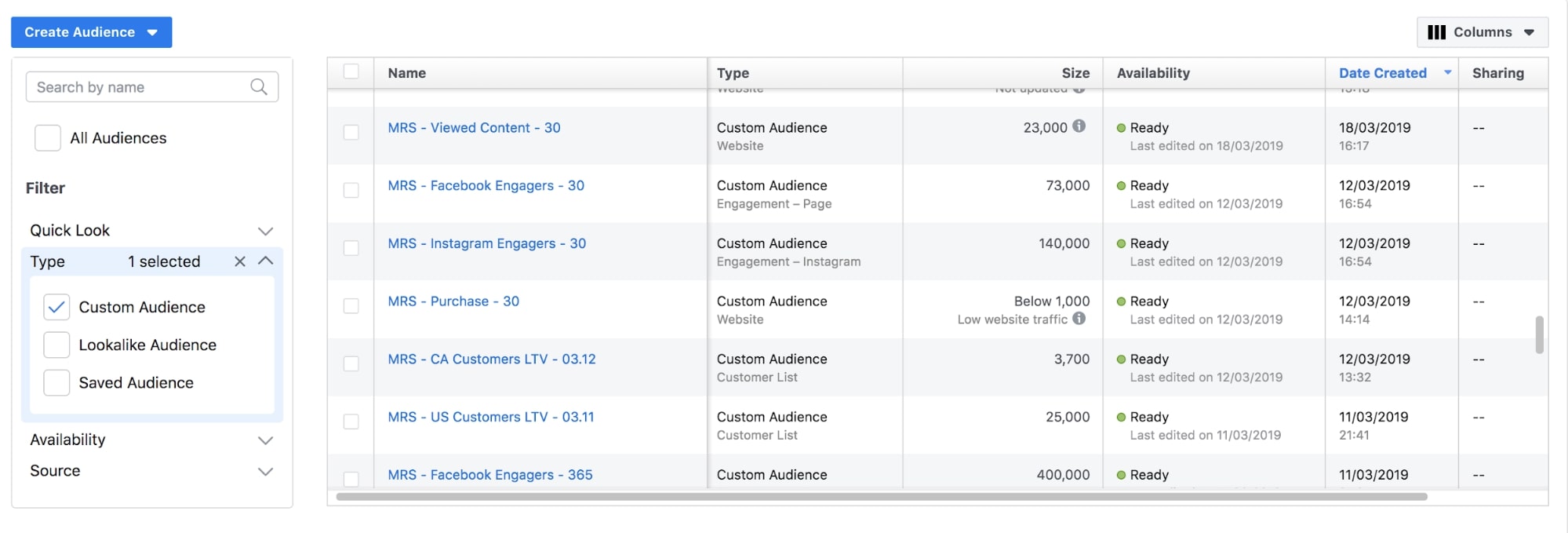
Here you can create audiences based on the following credentials:
- People who engaged with your brand on Facebook and/or Instagram
- People who visited your website
- People who spent a certain amount of time on your website
- People who visited specific pages of your website
- People who viewed a product (called "viewed content")
- People who added a product to their cart
- People who initiated checkout
All of these audiences can also be defined by time frame, which allows you to create tighter audiences of more recent prospects and larger segments of those who visited your website as far back as 180 days ago.
2. Segmenting your Facebook audience
With all of the custom audiences available to you through the Ads Manager, choosing which segments to target has a lot to do with the type of product you sell and your customers' typical buying behavior.
For businesses that sell impulse-purchase products that are lower cost, you may not need to retarget people further back than 30 days.
For higher-end brands or those selling big-ticket items, like mattresses or engagement rings, retargeting might take place over a 180- or even a 365-day window.
If you're not sure exactly how long you need to retarget people, these are some of the most commonly used audience segments for retargeting:
- Social (Instagram and Facebook) engagers: Past 90 days
- Website visitors: Past 30 days
- Viewed content: Past 14 days
- Added to cart: Past 7 days
- Initiate checkout: Past 7 days
3. Building your funnel
Once you have your audience segments created, it is time to structure them into a funnel so you can monitor and optimize how each audience performs separately.
This can be done at the Ad Set level when you're building your retargeting campaign. If you want to only target your social media engagers, for example, you will need to exclude those who have made it past that point and visited your website.
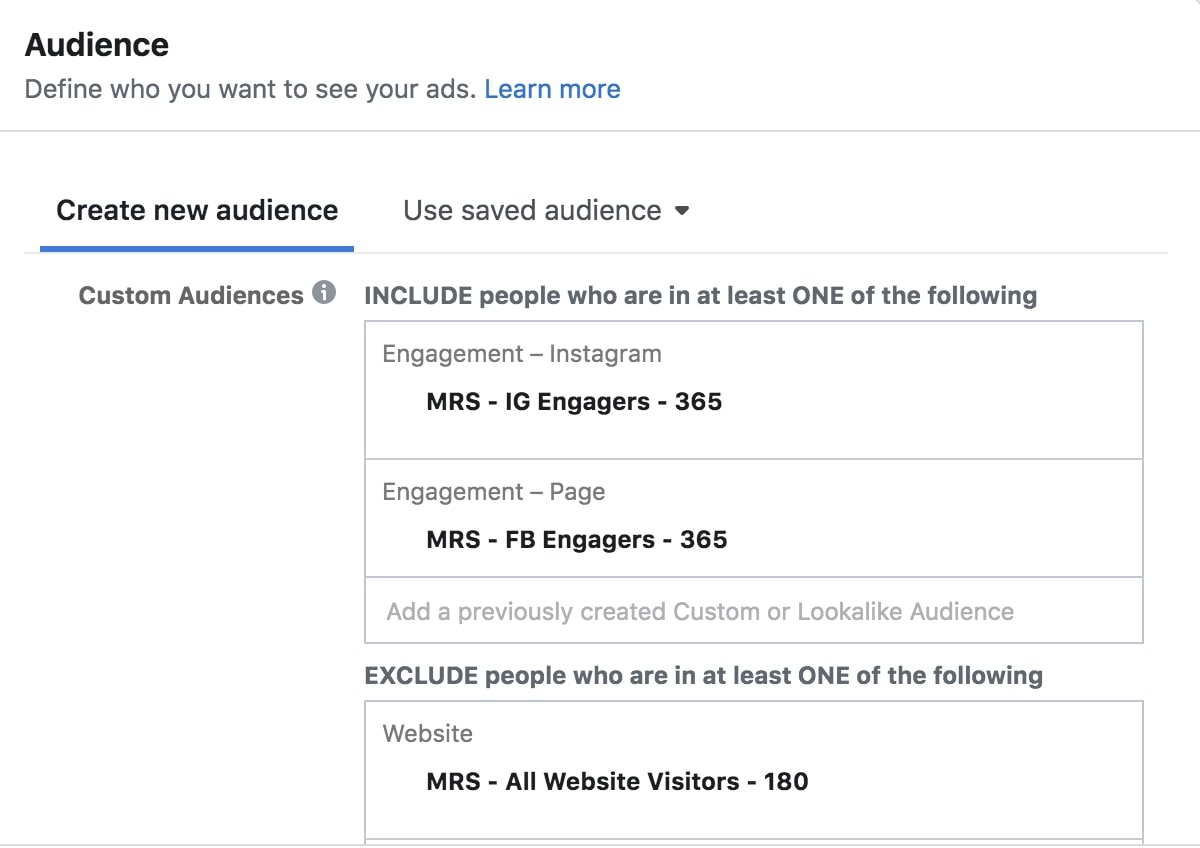
By taking this strategy and building out a full retargeting funnel that separates upper funnel (aware of your brand) and lower funnel (closer to purchase) audiences, you can successfully target all of these segments of customers at different stages of the purchasing journey.
You can see how each action implies the stage of the funnel that the audience is currently at:
- Social media engagers (upper funnel)
- Website visitors (upper funnel)
- Viewed content, which means viewed product page on Shopify (middle funnel)
- Added to cart (lower funnel)
- Initiated checkout (lower funnel)
A good retargeting funnel should exclude lower-funnel objectives (purchase) from higher-funnel audiences (social media engagers).
By properly applying exclusions to each audience in the Ad Set section of your campaigns on Facebook, you will successfully segment your customers out and avoid audience overlap.
Audience overlap happens when you are targeting the same segment of customers in two places, which creates unclear results as to which segment is driving purchases.
4. Setting budgets
Once you have set up your retargeting campaign, complete with multiple audiences for each segment of your funnel, it is time to start monitoring them and optimizing your spend.
Knowing how much to spend each day on each segment of the funnel requires some testing. Begin with setting low or moderate daily budgets for each audience (e.g. around $20 to $60).
You can decide how much to initially allocate to each segment of your funnel based on the estimated audience size given in Facebook Ads Manager:
- For smaller audiences, like those who abandoned checkout in the last seven days, you will likely only need a small budget to reach everyone in this segment.
- For larger audiences, like website visitors within the last 180 days, you might want to allocate a slightly larger budget in order to give your campaign the opportunity to reach enough people to drive conversions.
5. Optimizing your Facebook retargeting campaigns
Once your retargeting campaigns are up and running, you will want to check in on them each day to monitor results and make optimizations to improve their performance.
Optimizations are usually done by decreasing or increasing budgets based on how many purchases you are getting and, when it comes to retargeting, the frequency of your reach.
Frequency refers to the average number of times a person within one of your retargeting audiences is seeing an ad for you over a given period of time. Checking on your daily or weekly frequency for each audience will ensure you aren't over- or under-serving your campaigns to the same people.

As you adjust your budget, you will notice your frequency changes. Once you've tested out different budgets to find which delivers the best results, you should also know what frequency is ideal for each segment of your funnel. This will allow you to monitor frequency and make sure it stays at an ideal level, regardless of the size of your audience.
Making the most of your creative for retargeting
One of the best ways to continue optimizing your campaigns for better results is to experiment with creative formats, like videos, photos, and ad copy.
While segmenting your audience properly will set your retargeting campaigns up for success, it is equally important to make sure that the actual ads your potential customers see are converting.
Dynamic product ads
If you've seen a retargeting ad while on social media or while browsing the internet lately, it likely took the form of a dynamic product ad. A dynamic product ad (DPA) pulls website images, titles, prices, and descriptions directly from websites you've visited to create a carousel of products you might be interested in.
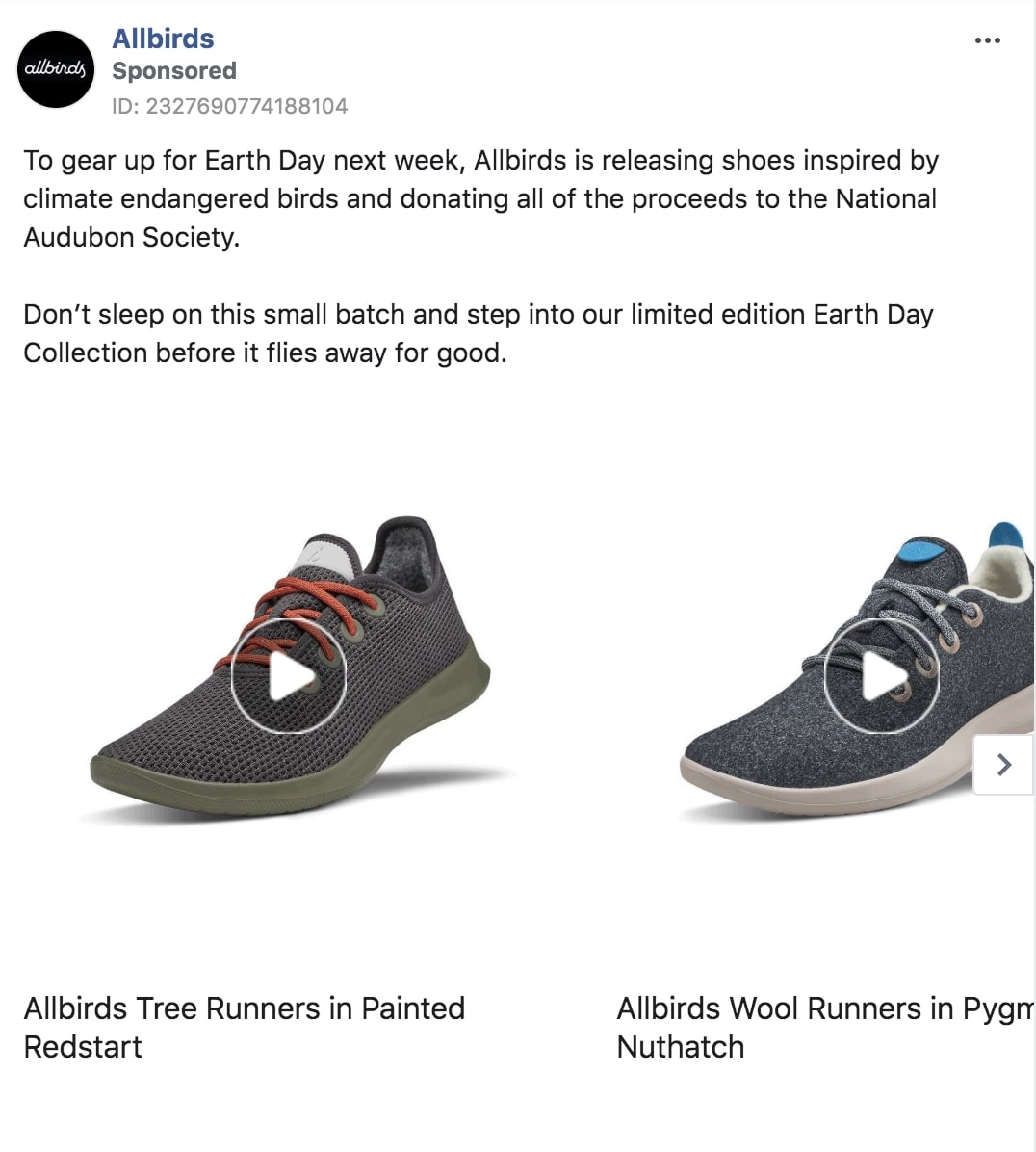
These types of retargeting ads are very effective at bringing website browsers back to their cart or checkout to complete their purchase. The Facebook algorithm personalizes which products are shown to only include ones the person has viewed or is likely to purchase based on their past behavior.
In order to create dynamic product ads, you will need to upload your product catalogue to Facebook. Once this is done, you can create a campaign with the Catalogue Sales objective and start targeting your audiences with DPAs.
Using photos and videos
While DPAs make great advertising creative for retargeting, you should also test using creative that goes beyond static website photos. Other creative content worth integrating into your retargeting strategies are:
- Photos taken by customers or influencers using your product
- Videos demonstrating how your product looks or functions
- Videos answering frequently asked questions from customers
- Any new products you've launched lately that they may not have seen on your website
After testing multiple creative formats, it is likely that your overall Facebook retargeting strategy will include a mixture of DPAs for lower-funnel retargeting audiences, and informative videos for those who haven't yet made it to a product page.
Copywriting techniques for retargeting
Aside from the media used in your retargeting strategies, it is important to also write copy that will speak to questions customers have during the consideration phase of their purchasing journey.
If a customer hasn't yet converted on your website but has shown interest in your brand or product, what can you say to convince them that the purchase is worthwhile?
Here are some top pre-purchase concerns and how you can reassure customers.
Price:
- Highlight the value (quality, number of uses, etc.) of the product
- Offer a discount code to first-time customers to sweeten the deal
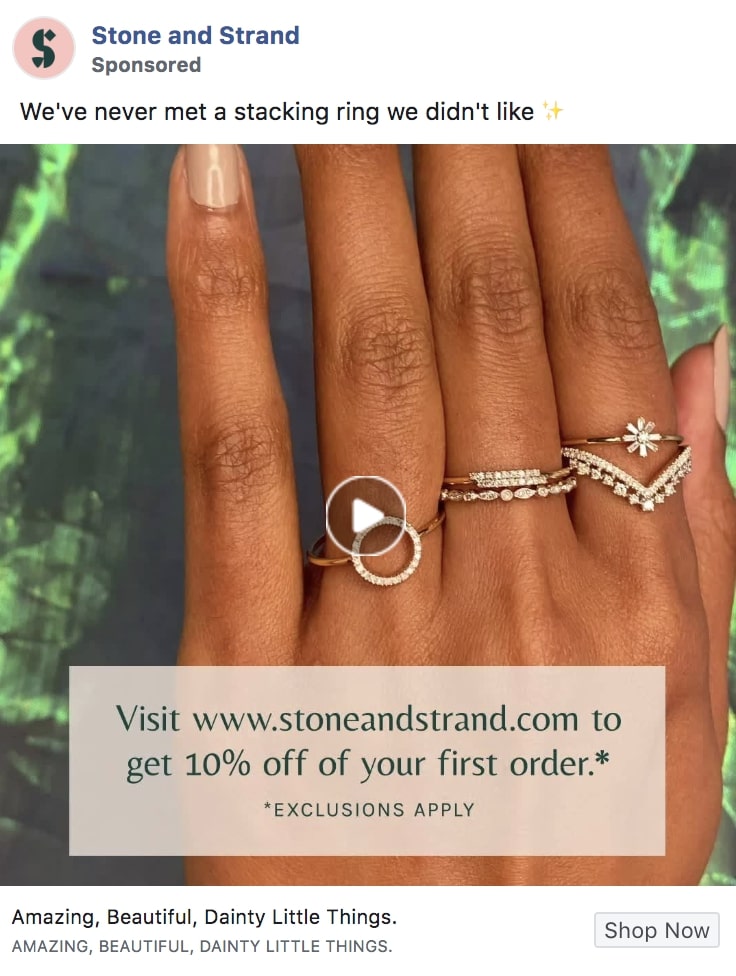
Shipping and returns:
- Do you offer free shipping on orders over a certain value? Call it out in the copy
- If you have an easy return and exchange program, consider surfacing it here

Quality:
- Feature a customer quote that addresses any concerns a prospect might have around the quality of the product
- Talk about the materials and/or process used to create your product to give customers peace of mind

"In our middle-of-the-funnel retargeting, our copy aims to showcase our unique selling propositions or brand origin story in a succinct, easy-to-digest way," says Jake Newbould, Head of Digital Marketing at Piglet, "We're trying to persuade already-engaged customers why you should buy Piglet products over our competitors."
The best creative for retargeting both reminds and reassures customers about your brand and your product. In addition to showing them relevant products through DPAs, use the post copy as an opportunity to fill in the blanks for them whether it be through social proof or highlighting your customer service.
Facebook retargeting: Turn more browsers into buyers
A strong retargeting strategy will allow your ads to reach the right people with the right message at the right time. Timing plays such a key role in the decision-making process that you should structure your entire strategy around segmenting your customers based on their user history.
By creating a retargeting funnel that works from the first interaction a customer has with your brand all the way down to their final decision to click Checkout, you can make sure no potential sales are left on the table.
Even better, if you can pair together creative that addresses any questions and concerns while providing social proof and a frequent reminder of what they viewed, your retargeting strategy can persuade passive visitors to become enthusiastic shoppers.
Illustration by Eugenia Mello
Facebook Retargeting Minimum Audience Size
Source: https://www.shopify.ca/blog/facebook-retargeting
Posted by: rollinghend1996.blogspot.com

0 Response to "Facebook Retargeting Minimum Audience Size"
Post a Comment